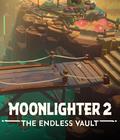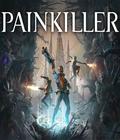Painkiller debuted in 2004, and it was a hit. The story was fine, but the real appeal was in the hellish setting mixed with back-to-basics gunplay and interesting weapons in a fast-paced setting. The game did well enough that it spawned a large number of sequels, but they all had the misfortune of being done by different developers for different publishers. The 2025 version of Painkiller is no different, as 3D Realms is the publisher, with Anshar Studios taking a crack at the series, but this iteration is vastly different from every other game in the series.
The story is the first indication that this reimagining is very different. You play as one of four sinners who's earned a chance at redemption. In exchange, you become mercenaries for the Voice of the Creator, Metatron. The fallen angel Azazel has started gathering his forces to plot an invasion of Earth, and all of you have been tasked with stopping him and his forces.
One can argue that the original titles didn't have compelling narratives, but the 2025 version of Painkiller has the bare minimum of lore. You only get pieces of a story when a character briefly mentions something about their past. If you check the game's codex, all it does is repeat those lines in written form. The opening level only shows you interacting with two other characters, so seeing another selectable character appear out of thin air shows little care for consistency. The characters aren't given much incentive to fight against Azazel, so there isn't much of a reason why they're on these missions. The other characters have a very nonchalant attitude, making this feel more lighthearted than a game that involves shooting things from hell.
The second major indication that this game is completely different from its predecessors is the focus on multiplayer. By default, the game places you in an online menu, and you have to choose to play in a private match to get a single-player experience. You can also choose to go offline, but with the game warning you that any offline progress is treated as separate from online progress, there's little incentive to cut off internet access unless you'll be in a place where internet access is spotty. Even if you play solo, you'll always get bots for your companions, so you're never taking on the adventure alone. One odd thing about the game is that, while there are four selectable characters, your party only has room for three players in any human and bot configuration, so the game feels limiting. Despite each character coming with buffs of their own, those bonuses don't feel so impactful, so the character choice is based on personal preference.
Longtime fans may feel deflated at learning that this is an online-focused game with minimal lore, but the general gameplay hasn't changed much from the original titles. The gunplay is fast and brutal, with every shot feeling like it hits hard. Everything mows down most enemies with ease, from the basic shotgun to the stake launcher and shuriken-powered machine gun. Every gun has two modes of fire, with the second being powerful and element-based. The game further emphasizes speed by ensuring that no gun has any reload time, so you're getting a mostly authentic Painkiller experience. The only flaw comes with the titular painkiller weapon itself, which still works great when dealing with mobs but doesn't have a secondary attack like it did in previous titles. The game wants you to use it to produce ammo from enemies, which makes it fall more in line with the modern Doom entries, but you won't use the weapon too much specifically for that purpose.
The guns are good, but they get better once you start giving them upgrades. For example, the stake gun can be modified to shoot three stakes at a time, or you can change the stakes to act more like drills, so you can bore into enemies rather than impale them. You can make shurikens from your gun bounce around the environment or split into even more shurikens once it hits a target. The available options are nice, and what's nicer is the fact that you can replace any of these abilities in between fights.
The 2025 version of Painkiller makes a mistake with the weapons that goes against series tradition. Aside from the painkiller, you cannot carry more than two weapons at a time. The game sticks with the modern convention of only letting you swap between two guns, rather than letting you carry every weapon and cycle through them as needed. Furthermore, you only have two selectable weapons from the outset, so you need to unlock the four other guns before you can use them. For those who haven't played a Painkiller game before, this won't be a big deal, but for those with any experience with past entries, this feels like a big step back in the combat.
The gunplay is good, but the enemy encounters can feel tiresome. A big reason for this is because the game throws enemies at you at a breakneck speed. Almost every enemy knows how to rush toward you in large numbers, and since most of the foes are fast, you'll just hold down the fire button unless you're carrying something. It might make sense to do this in monster closet rooms, but the game takes a page from the likes of Left 4 Dead and its contemporaries by throwing enemies at you whenever the scene gets quiet. There's barely any time to catch your breath before you're in another fight. While it makes firefights exciting and frantic, the constant presence of things to shoot begins to wear on you because you rarely have time to explore the surroundings.
That overwhelming feeling is even stronger if you're playing the game with bots. The bots are very competent and can take care of swaths of enemies while rarely getting hurt. They can't open doors, but they can provide support by resurrecting you or deploying ammo and health in a timely manner. Ubiquitous enemies means the bots are always shooting at something, and bots have a tendency to zip around a level so erratically that it feels like you're playing with someone online who's suffering from network issues. The effect looks bad enough that you feel like something is going wrong, amplifying the feeling that there's too much action going on at every moment.
The game is split into two main mission types. The first is simply titled Raids, and the mode plays like other multiplayer online co-op shooters, like Back 4 Blood or Warhammer: Vermintide. You can choose between one of three environments to play in, each sporting three levels of their own. Levels are mostly made up of loads of monster closets, with a few platforming areas in between. There are lots of checkpoints to provide ammo, health refills and resurrection spots to bring back fallen allies, but you must finish a level in one run because the checkpoints don't actually save progress.
The good news is that the level design tries to mix things up when you reach certain monster closets. Most situations have you blasting away at multiple waves of enemies. Others have you trying to power up sigils to unblock obstacles. You have a few situations where you need to throw soul canisters at specific spots and others where you're doing the same with blood canisters but need to kill bunches of enemies first to fill up the canisters. Granted, none of these are particularly inspired or new for the genre, but they break up the monotony of blasting everything in sight.
The bad news is that the game seems obsessed with platforming, and the mechanics don't want to cooperate all the time. This is most noticeable when you get near a skull that's meant to serve as a sticking point for a hook shot. The radius for the skull detecting that you're in range is finicky and rather small, so there are plenty of moments when you'll take a leap, furiously smash the grapple button, and fall to your doom — only to discover that the grappling point is active once you respawn. You don't have a double-jump, just a singular jump followed up by a dash, so sometimes, you don't have enough room to reach the grapple point zone. The platforming woes also come up when you're trying to climb a wall, as you'll sometimes do a jump away from the wall instead. These traversal mechanics do really need to be tightened up as these moments of frustration creep up far too often in the later levels.
The other mission type is Rogue Angel, which transforms Painkiller into a roguelike of sorts. You start the mode by choosing two weapons, alt-fire attacks, and what kind of reward you want. Then your party must fight through a segment from one of the nine raid levels. The process repeats before ending with a boss fight that's also randomly pulled from the raid levels. The idea is fine, but the lack of new stages or fights specific to this mode means that the fun factor is diminished if you've already gone through the raids before tackling this. The pacing is hurt by the constant presence of loading screens between each section; it slows things down but not in a way that anyone wanted.
The game feels like it's rather light on content — at least before the inevitable DLC starts coming in — but there is an unspoken expectation of replaying stages and modes multiple times if you're a completionist. Even from the start, you get the feeling that you'll be doing a ton of grinding due to the iffy economy system. There are two types of currency to deal with: coins and tokens. Coins can be used to get extra costumes for your characters and skins for your guns. Coins are also used to draw random tarot cards from the deck, and you'll spend more than you expect since drawing one card doesn't exclude that same card from appearing again in another draw. Tokens are spent on gun upgrades and on reviving any tarot cards you used up in a raid. Both tokens and coins are used for buying new guns. The tokens are earned at a decent pace, but it always feels like the coins are earned at a slower pace. If your goal is to unlock the guns first, you'll have to defeat every raid level on the normal difficulty level without spending too much on upgrades and refraining from using tarot cards. If you're trying to get all of the tarot cards, then you'll play every raid level and a few roguelike runs multiple times due to the randomization aspect of each card pull, combined with low coin payout. There's rarely a moment when you'll get enough funds in one raid to buy anything of significance unless you're running at the higher difficulty levels and getting lucky enough to not get killed often. The idea of a grind is inevitable because the upgrade process is very slow.
Graphically, Painkiller is quite nice. The environments look good, with no sign of texture pop-in. The characters also look good, but with everything going by so quickly, you may not notice the details unless you look at the models in the codex. The lighting and particle effects really spruce up the environments. The game can handle multitudes of things occurring on-screen at any one time without any sign of slowdown.
The audio is fine. The music is appropriately metal, but it lives so far in the background that you'll only notice it when the action finally settles down for a few seconds. The sound effects are particularly punchy, the voices are good, and most of the lines are fine. The one exception is the voice for Void, whose delivery sounds completely out of place — as if he were a machine and not a fallen angel. The game also has a few issues with lines being cut mid-delivery for no discernable reason.
For Steam Deck users, the game will run on the device, but it'll do so with some compromises. The game runs at the Deck's native 1280x800 resolution, but you'll need to select this in the Settings menu because the resolution defaults to 1280x720 otherwise. Previously made settings from other machines also carry over, so you'll want to set every graphical setting to Low to squeeze out the most from the game. The sacrifice is with stilted enemy animations from a distance and lower texture resolution, but that's a small price to pay. The frame rate hits 60fps when nothing is happening, but an average battle can see the frame rate drop as low as 35fps. As for battery life, you're looking at a little over 90 minutes from a full charge on the LCD version of the device. Meanwhile, those wanting to play the game on a Linux desktop will find no need to tweak anything, as the default version of Proton works fine.
Your feelings on the latest iteration of Painkiller will depend on several different factors. If you're looking for a title with a good story and characters or crave a true single-player experience, you'll hate it. If you're looking for something that doesn't require grinding to get the most out of the title, you'll also dislike the game. If you're looking for boomer shooter sensibilities in a co-op setting and really dig the different hellish vibes, you'll like Painkiller. Even then, unless you're a completionist, it'll take one run through all of the levels and perhaps a few attempts at the roguelike mode before you move on, making this a fleeting experience rather than something with staying power.
Score: 6.5/10
More articles about Painkiller











 The classic Painkiller series is back! Battle through Purgatory in fast-paced co-op action, wielding infernal weapons against relentless demonic hordes.
The classic Painkiller series is back! Battle through Purgatory in fast-paced co-op action, wielding infernal weapons against relentless demonic hordes.











